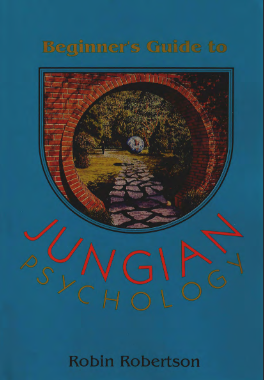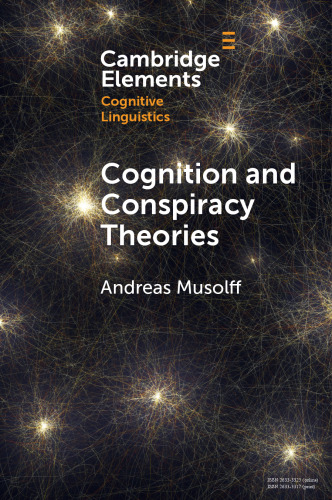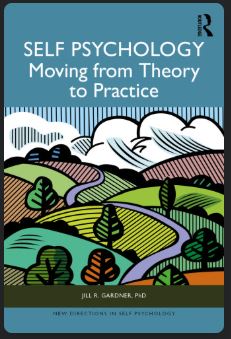CHAPTER 1 ]UNG AND THE UNCONSCIOUS Every advance in culture is, psychologically, an exten- sion of consciousness, a coming to consciousness that can take place only through discrimination. -Carl ]ung This book is about the psychology discovered by Carl Gus - tav Jung in the first half of the 20th century and its rele- vance for all of us as we pass into the new world of the 21st century . Jung was a truly original thinker whose ideas are still largely unknown or misunderstood. He wasn't always right; pioneers never are. His view of reality was so different from the prevailing world view that it has often been difficult for fellow psychologists and scientists to grasp what he actually meant. This wasn't helped by a writing style that was both too literary for his academic colleagues and too scholarly for his literary admirers. Artists and writers have fought their way through to an understanding of the essence of Jung better than the academicians, but they have often general- 2 I Robin Robertson ized too quickly, unable to cope with the breadth and depth of Jung's mind. In this book, I will try to present a unified picture of Jung's thought, perhaps more unified than is found in his colle~ted writings, but one which I think is a fair presenta- tion of his ideas. My emphasis will be on the practical utility of his ideas, since he has so often been dismissed as impractical and unrealistic. But first, I want to present some idea of the kind of man Jung was, how and why he came to develop the most original world view of the 20th century . JUNG AND FREUD Like Sigmund Freud, his still more famous mentor, Jung was a medical doctor who became one of the early pio- neers in the new field of psychoanalysis. Though a clinical psychologist, Jung also did pioneering work in experimen- tal psychology that later led to the lie detector (whose misuse Jung would have abhorred). However, Jung first attracted the attention of Sigmund Freud with his early concept of a complex (i.e., feelings, images and memories so clustered about a single concept, such as "the mother," that they form a whole in the mind). Complexes will be discussed at some length in chapter 2. Freud was nineteen years older than Jung and had already done some of his greatest work. Psychoanalysis was as yet nearly unknown and Freud was either dismissed or reviled by both the medical and academic communities. You couldn't describe a more perfect situation for Jung to hero-worship Freud, nor for Freud to "adopt" a chosen disciple. In 1906, Jung met Freud and soon after became first Freud's favorite colleague, then his appointed succes- sor . Unfortunately for Freud's plans, Jung was not cut out to be anyone's disciple. Freud and Jung were very differ- 4 I Robin Robertson Freud made the Oedipal complex the cornerstone of his theory; it was the single most significant psychic ele- ment that underlay masculine development . Jung saw something much more exciting in Freud's discovery: the idea that all the ancient myths still lived inside each of us. In the story of Oedipus, while Freud found a description for all psychic development, Jung saw a single example of a multitude of psychic invariants inside each of us. Fabled Greek mathematician Archimedes was that rar- est of men: a theoretician wl:o could turn his theories to practical use. He used mathematical relationships to develop ingenious combinations of pulleys and levers, which he used to move enormous objects . There is an apocryphal story that, flushed with his success, Archi- medes cried, "Give me a place to stand on and I will move the earth!" Like Archimedes, Jung realized that Freud had discov- ered a single example of how psychology could escape from personal history by turning to the history of the race as it was recorded in mythology. This historical approach provided both a place to stand on that was outside the patient and a lever to move the patient's psyche. Jung immediately began to pursue this exciting new direction in psychology. In 1912, Jung published the first fruits of his research as Transfonnations and Symbols of the Libido (later exten- sively rewritten and published as Symbols of Transfonnation in 1952). This book proposed the heretical notion that libido was not merely sexual energy, but psychic energy, and that an image in a dream was much more than a simple rebus that could be decoded to reveal a forbidden sexual desire. In a dazzling display of scholarly detective work, Jung turned to the whole field of mythology for amplification of the fantasies of a single woman in the incipient stages of schizophrenia.
چکیده فارسی
فصل 1 ]انگ و ناخودآگاه هر پیشرفت در فرهنگ، از نظر روانشناختی، گسترش آگاهی است، رسیدن به آگاهی که تنها از طریق تبعیض صورت میگیرد. -Carl ]ung این کتاب در مورد روانشناسی کشف شده توسط کارل گاس تاو یونگ در نیمه اول قرن بیستم و ارتباط آن برای همه ما با عبور از دنیای جدید قرن بیست و یکم است. یونگ یک متفکر واقعاً اصیل بود که ایدههایش هنوز تا حد زیادی ناشناخته یا اشتباه درک شده است. همیشه حق با او نبود. پیشگامان هرگز نیستند. دیدگاه او نسبت به واقعیت به قدری متفاوت از جهان بینی رایج بود که اغلب برای روانشناسان و دانشمندان همکار دشوار بوده است که منظور او را درک کنند. سبک نوشتاری که هم برای همکاران دانشگاهیاش خیلی ادبی بود و هم برای طرفداران ادبیاش خیلی عالمانه به این امر کمکی نکرد. هنرمندان و نویسندگان برای درک ماهیت یونگ بهتر از دانشگاهیان راه خود را پیمودهاند، اما غالباً به طور کلی به این نتیجه رسیدهاند. در این کتاب، من سعی خواهم کرد تصویری یکپارچه از اندیشه یونگ ارائه دهم، شاید یکپارچه تر از آنچه در نوشته های جمع آوری شده او یافت می شود، اما به نظر من تصویری که به نظر من ارائه منصفانه ایده های او است. تاکید من بر کاربرد عملی ایده های او خواهد بود، زیرا او اغلب به عنوان غیرعملی و غیر واقعی رد شده است. اما ابتدا، میخواهم ایدهای از نوع مردی که یونگ بود، چگونگی و چرایی پیدایش اصیلترین جهان بینی قرن بیستم ارائه کنم. یونگ و فروید مانند زیگموند فروید، مربی مشهورتر او، یونگ یک پزشک پزشکی بود که یکی از پیشگامان اولیه در زمینه جدید روانکاوی شد. یونگ اگرچه یک روانشناس بالینی بود، اما در روانشناسی تجربی نیز کار پیشگامی انجام داد که بعداً به آشکارساز دروغ (که استفاده نادرست یونگ از آن متنفر بود) منجر شد. با این حال، یونگ ابتدا توجه زیگموند فروید را با مفهوم اولیهاش از یک مجموعه (یعنی احساسات، تصاویر و خاطرات در مورد یک مفهوم واحد، مانند «مادر»، که یک کل را در ذهن تشکیل میدهند، جمع شده بود، به خود جلب کرد. مجتمعها در فصل 2 بهطور مفصل مورد بحث قرار خواهند گرفت. فروید نوزده سال از یونگ بزرگتر بود و قبلاً برخی از بزرگترین کارهای خود را انجام داده بود. روانکاوی هنوز تقریباً ناشناخته بود و فروید یا توسط جامعه پزشکی و دانشگاهی طرد شده یا مورد تحقیر قرار گرفت. شما نمیتوانید موقعیت عالیتری را برای یونگ برای قهرمان پرستی فروید توصیف کنید، و نه برای فروید که یک شاگرد برگزیده را «پذیرفتن» کند. در سال 1906، یونگ با فروید آشنا شد و اندکی بعد ابتدا همکار مورد علاقه فروید و سپس جانشین منصوب او شد. متأسفانه برای نقشه های فروید، یونگ به عنوان شاگرد کسی انتخاب نشد. فروید و یونگ بسیار متفاوت بودند. این تنها مهمترین عنصر روانی بود که زیربنای رشد مردانه بود. یونگ چیز بسیار هیجان انگیزتری را در کشف فروید دید: این ایده که تمام اسطوره های باستانی هنوز در درون هر یک از ما زندگی می کنند. در داستان ادیپ، در حالی که فروید توصیفی برای همه رشدهای روانی یافت، یونگ یک نمونه واحد از انبوهی از متغیرهای روانی را در درون هر یک از ما دید. ارشمیدس، ریاضیدان افسانهای یونانی، نادرترین انسان بود: نظریهپردازی که میتوانست نظریههای خود را به کاربرد عملی تبدیل کند. او از روابط ریاضی برای ایجاد ترکیبی مبتکرانه از قرقره ها و اهرم ها استفاده کرد که از آنها برای جابجایی اجسام عظیم استفاده می کرد. داستانی غیرمعمول وجود دارد که ارشمیدس که از موفقیت خود سرخ شده بود، فریاد زد: "به من جایی بدهید که روی آن بایستم و من زمین را حرکت خواهم داد!" مانند ارشمیدس، یونگ متوجه شد که فروید یک نمونه واحد را کشف کرده است که چگونه روانشناسی می تواند با روی آوردن به تاریخ نژاد همانطور که در اساطیر ثبت شده است از تاریخ شخصی فرار کند. این رویکرد تاریخی هم مکانی برای ایستادن بود که بیرون از بیمار بود و هم اهرمی برای حرکت دادن روان بیمار. یونگ بلافاصله شروع به دنبال کردن این مسیر جدید هیجان انگیز در روانشناسی کرد. در سال 1912، یونگ اولین ثمره تحقیقات خود را با عنوان Transfonnations and Symbols of the Libido منتشر کرد (که بعداً به طور گسترده بازنویسی شد و در سال 1952 به عنوان نمادهای انتقال منتشر شد). این کتاب این مفهوم بدعت آمیز را مطرح کرد که میل جنسی صرفاً انرژی جنسی نیست، بلکه انرژی روانی است، و اینکه یک تصویر در رویا بسیار بیشتر از یک ربوسی ساده است که می تواند برای آشکار کردن یک میل جنسی ممنوع رمزگشایی شود. یونگ در نمایش خیره کننده ای از کارآگاهی علمی، برای تقویت خیالات یک زن مجرد در مراحل اولیه اسکیزوفرنی به کل حوزه اسطوره شناسی روی آورد.
ادامه ...
بستن ...
First published in 1992 by
Nicolas-Hays, Inc .
P.O. Box 540206
Lake Worth , Florida 33454-0206
www.nicolashays.com
Distributed to the trade by
Red Wheel/Weiser, LLC
65 Parker St. Ste 7
Newburyport, MA 01950
www.redwheelweiser.com
Copyright © 1992 Robin Robertson
All rights reserved. No part of this publication may be reproduced or
transmitted in any form or by any means, electronic or mechanical, includ-
ing photocopying, recording , or by any information storage and retrieval
system, without permission in writing from Nicolas-Hays , Inc. Reviewers
may quote brief passages.
Library of Congress Cataloging-in-Publication Data
Robertson, Robin.
Beginner's guide to Jungian psychology I by Robin Robertson.
p. em .
Includes bibliographical references and index.
1. Psychoanalysis . 2. Jung, C. G. (Carl Gustav), 1875--1961.
I. Title.
BF173.R5515 1992
150.19'54-dc20
ISBN-13: 978-0-89254-022-8
ISBN-I 0: 0-89254-022-2
VG
92-1772
CIP
Cover art copyright © 1992 Rob Schouten . Used by kind permission .
Typeset in 11 point Palatino
Printed in the United States of America
10
12 11 10 9 8
The paper used in this publication meets the minimum requirements of
the American National Standard for Information Sciences-Permanence of
Paper for Printed Library Materials 239.48-1992 (R1997).
TABLE OF CONTENTS
List of illustrations ... ...... .. . .................... vii
Acknowledgments . . . . . . . . . . . . . . . . . . . . . . . . . . . . . . . . ix
Chapter 1: Jung and the Unconscious . . . . . . . . . . . . . . 1
Chapter 2: The Psyche . . . . . . . . . . . . . . . . . . . . . . . . . . . 15
Chapter 3: Dreams . . . . . . . . . . . . . . . . . . . . . . . . . . . . . . . 47
Chapter 4: Psychological Types . . . . . . . . . . . . . . . . . . . 71
Chapter 5: The Shadow ...... ... .. ............... 105
Chapter 6: The Anima and Animus ............ ... 135
Chapter 7: The Self . .. .. .. . .. . ................... 171
Afterword . . . . . . . . . . . . . . . . . . . . . . . . . . . . . . . . . . . . . . . 205
References . . . . . . . . . . . . . . . . . . . . . . . . . . . . . . . . . . . . . . 209
Index .......... . .. . . . . .. . . . . . . ..... .... . . .. .... . 221
About the Author .... ..... ... .. ............ . ..... 230
ادامه ...
بستن ...










